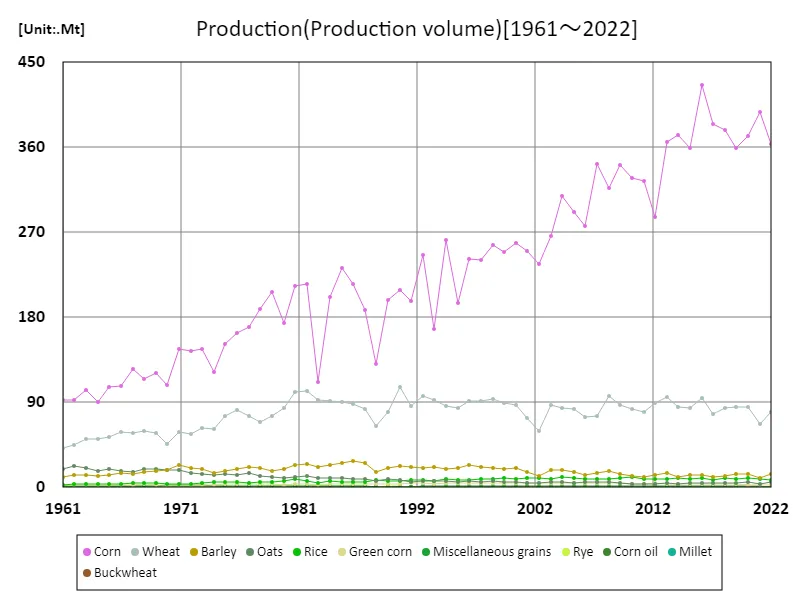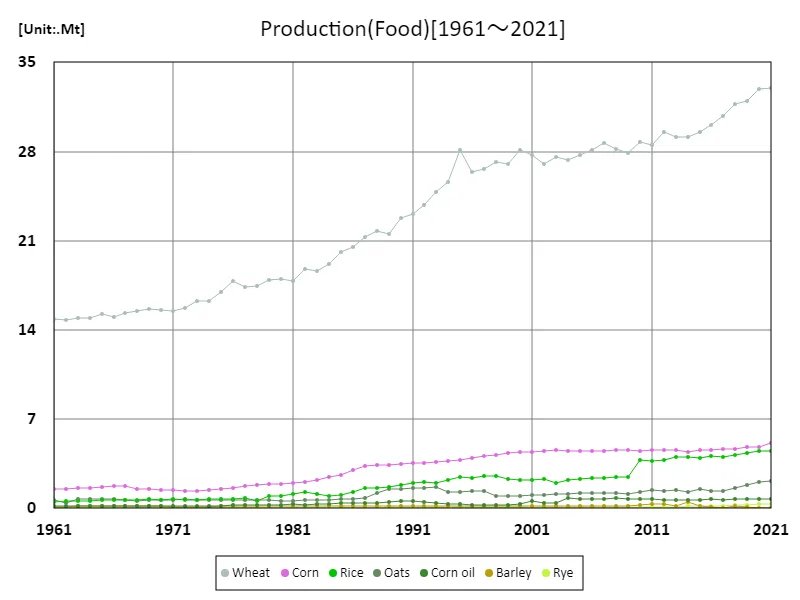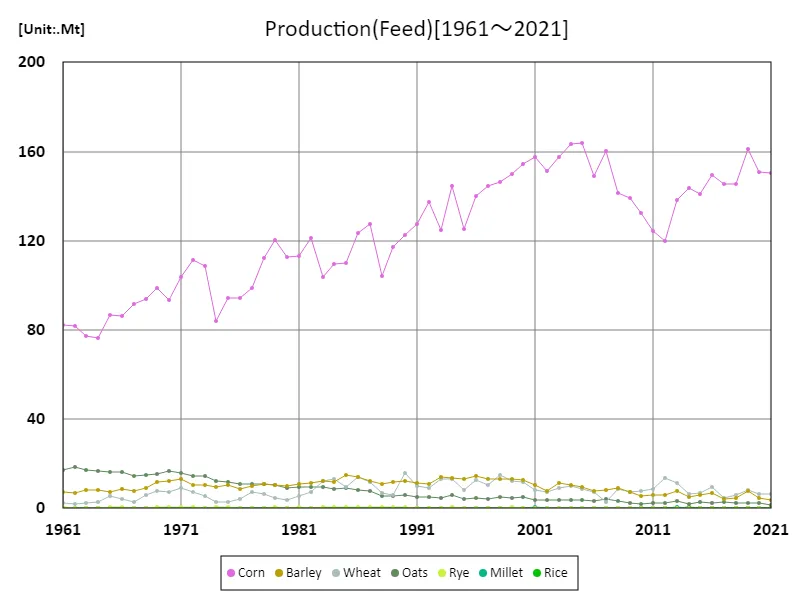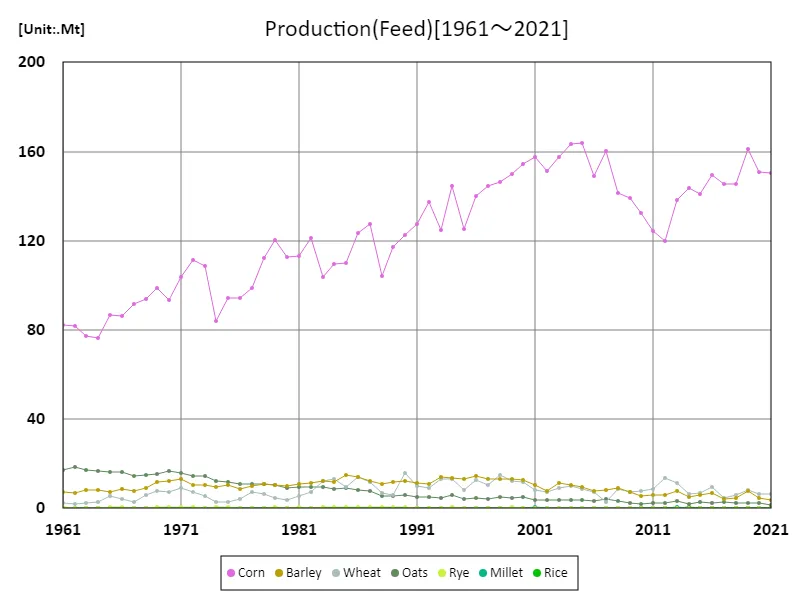Abstract
North American grain production is characterised by large amounts of corn production. According to data for 2022, corn production will reach 363 million tonnes (Mt), far outstripping other cereals. North America is one of the world’s largest corn producing regions, with much of the corn used for food and animal feed, and exports also being an important economic factor. Corn production has a variety of uses, not only for food supply but also for ethanol and animal feed, reflecting the versatility of agriculture. In particular, the United States is the world’s largest corn exporter, and export volumes are increasing year by year. It is also widely used as animal feed and plays an essential role in the livestock industry.
Production(production (production volume))
A defining feature of grain production in North America is the central role played by corn. Data from 1961 to 2022 show that corn production peaked in 2016 at 426 million tonnes (Mt). During this period, advances in agricultural technology, improved crop varieties, and increased demand for biofuel (ethanol) led to a significant increase in production. However, in recent years, production volume has fallen to 85.2% of its peak. This decline is likely due to factors including climate change, land degradation, and slowing demand for ethanol. Future production trends will depend on environmental responses and changes in demand. Additionally, the introduction of alternative crops and technologies to corn is progressing, leading to the diversification of grain production.


The maximum is 426Mt[2016] of Corn, and the current value is about 85.2%
Production (food)
Among grain production in North America, wheat production has grown significantly in recent years, especially in 2021, when it recorded a record high production volume of 33 million tonnes (Mt). This year’s production reached 100% of peak production, reflecting increased demand for wheat and improvements in agricultural techniques. Wheat plays an important role in food production in North America, not only for food but also for use in flour milling and as an ingredient in processed foods such as bread and pasta. In addition, due to improvements in climatic conditions and agricultural technology, wheat yields have been steadily increasing and production areas are becoming more diverse. In particular, Canada and the Midwestern United States are major producing areas that support wheat supply. In recent years, attention has been focused on improving wheat quality and environmentally friendly cultivation methods, and sustainable agriculture is being promoted.


The maximum is the latest one, 33Mt of Wheat
Import and export (exports)
North America’s largest export crop in terms of grain exports was corn, which reached 72.9 million tons (Mt) in 1961. This represented an overwhelming proportion of grain exports at the time and indicates the central position of corn in the North American agricultural economy. The total export volume was 135 million tons with an average export volume of 16.9 million tons, making North America the major source of grain supplies in the world market. In particular, the United States is the world’s largest corn exporter, and its role has grown with increasing international demand. North America is also an important exporter of other grains (wheat and soybeans), and agricultural production has a large impact on the economy. In recent years, there have been some fluctuations in export volumes due to changes in environmental regulations and trade policies, but North America continues to be an important supplier in the global market.


The maximum is 164Mt[2005] of Corn, and the current value is about 91.8%
Animal (feed)
The peak production of grain for animal feed in North America was corn in 1961, reaching 164 million tons (Mt). This reflects North American agriculture’s heavy reliance on livestock, with corn playing a major role as animal feed. In recent years, corn production has remained stable and demand for animal feed remains high. Demand for grain for feed is increasing with the expansion of livestock and poultry farming, and the increased use of corn for ethanol production is impacting feed production. Furthermore, advances in agricultural technology have made the production of feed grains more efficient, making it possible to achieve higher yields. The North American animal feed market will continue to play a key role in meeting the demands of the livestock industry.


The maximum is 164Mt[2005] of Corn, and the current value is about 91.8%



Comments